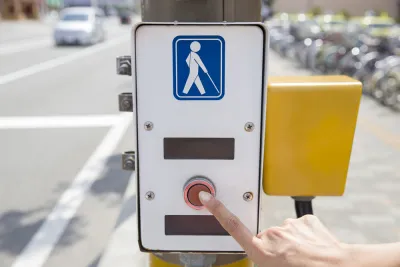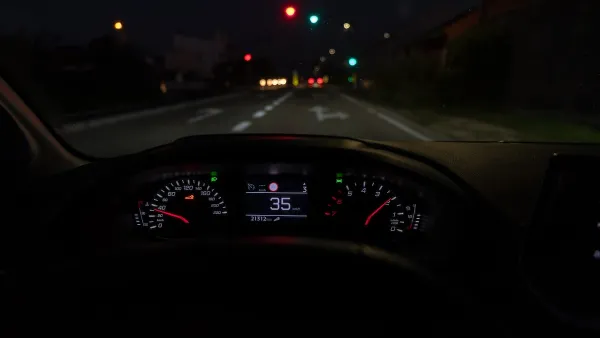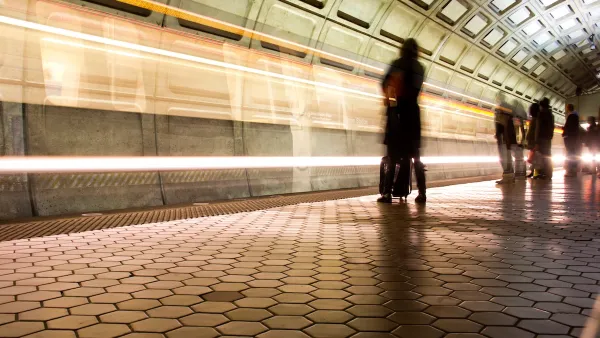Near-silent electric vehicles pose a danger to people with visual impairments, so engineers are studying ways to make the vehicles audible while maintaining the benefits of quieter streets.

“The electrification of mobility presents humanity with a rare opportunity to reimagine the way cities might sound,” writes John Seabrook in the New Yorker, replacing the grating noise of gas engines with the quiet smoothness of electric vehicles. But car noise can also be an important warning mechanism for people with visual impairment and all pedestrians. “Not only does engine noise announce a vehicle’s presence; it can also convey its direction, its speed, and whether it is accelerating or decelerating.”
According to a little-known 2010 Congressional act, “every E.V. and hybrid manufactured since 2020 and sold in the U.S. must come equipped with a pedestrian-warning system, also known as an acoustic vehicle alerting system (AVAS), which emits noises from external speakers when the car is travelling below eighteen and a half miles per hour.”
The article outlines the development of electric car soundscapes, which have become more specialized as research reveals the most effective sounds for both pedestrians and drivers. “Automakers have enlisted musicians and composers to assist in crafting pleasing and proprietary alert systems, as well as in-cabin chimes and tones.” The question is more complicated than one might imagine: “How do you put into regulatory legal language that a car should sound like a car?” asks John Paré of the National Federation of the Blind.
Meanwhile, electric cars must still be loud and distinctive enough to be useful. To that end, we could end up with a future just as noisy as today, “a cacophony of sound and dissonance if these cars are all singing different tunes, in different key signatures and pitches,” says Douglas Moore, a senior expert in exterior noise at General Motors.
FULL STORY: What Should a Nine-Thousand-Pound Electric Vehicle Sound Like?

Analysis: Cybertruck Fatality Rate Far Exceeds That of Ford Pinto
The Tesla Cybertruck was recalled seven times last year.

National Parks Layoffs Will Cause Communities to Lose Billions
Thousands of essential park workers were laid off this week, just before the busy spring break season.

Retro-silient?: America’s First “Eco-burb,” The Woodlands Turns 50
A master-planned community north of Houston offers lessons on green infrastructure and resilient design, but falls short of its founder’s lofty affordability and walkability goals.

Test News Post 1
This is a summary

Analysis: Cybertruck Fatality Rate Far Exceeds That of Ford Pinto
The Tesla Cybertruck was recalled seven times last year.

Test News Headline 46
Test for the image on the front page.
Urban Design for Planners 1: Software Tools
This six-course series explores essential urban design concepts using open source software and equips planners with the tools they need to participate fully in the urban design process.
Planning for Universal Design
Learn the tools for implementing Universal Design in planning regulations.
EMC Planning Group, Inc.
Planetizen
Planetizen
Mpact (formerly Rail~Volution)
Great Falls Development Authority, Inc.
HUDs Office of Policy Development and Research
NYU Wagner Graduate School of Public Service




























